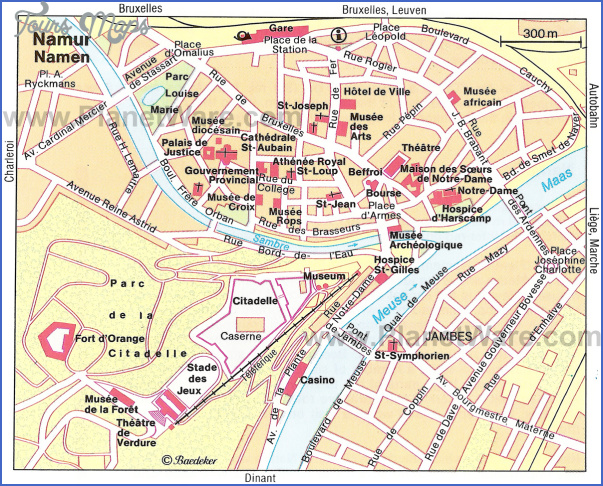CONTINUOUS EXPANSION
The economic development of our provinces dates back to the Middle Ages. It has been maintained throughout the centuries, surviving the vicissitudes of history. In recent times, the metallurgy of the Liege and Charleroi regions succeeded the cloth industry of the Flanders. This industrial growth demanded, in the 19th century, more and more raw materials and the opening of new markets to offset the smallness of the home market; it was then that the country’s commercial vocation took on its concrete form. Foreign trade has spurred on the activity of production to an ever-increasing extent. In our day of mergers and industrial concentrations, the concept of economic union dominates all others, and it is the reality expressed by that concept that is the real driving force of material progress. Belgium unhesitatingly adopted that concept, forcing herself to rationalise her production and to render it more competitive at world level.
Belgium Map Tourist Attractions Photo Gallery
THE PILLARS OF AN ECONOMY
The foundation of the national economy is industrial power plus exports. Industry supplies the country with half its revenue and employs almost half its labour force. Its exports of processed goods provide the country with the means to acquire from abroad the materials indispensable to the production and foodstuffs it needs. In this way, foreign trade stimulates the economic activity. Economic expansion pre-supposes the existence of a dense network of lines and means of communication, of civil engineering works, etc., through which Belgium is integrated into the world economy. These economic instruments are the country’s canals, ports and roads; they have constantly to be maintained, extended, modernised and improved. The infrastructure has always been the mainstay of economic progress. The Zandvliet lock, the Ronquieres inclined-plane lock a gigantic lighter transporter, representing one of the most audacious technical feats of our era and the tunnel connecting the two banks of the Scheldt are the most remarkable of Belgium’s recent achievements.
COMMERCIAL EXPANSION
Belgium has developed an intense commercial activity which, by the integration of an economy into a bigger space, has grown without cease. Commerce is the prime mover of its economic organisation.
It was Belgium’s geographical position that predestined her to foreign trade. Her position in the heart of industrial Europe, her topography and her waterways are admirably suited to commerce. Lacking in mineral resources indispensable to industry, our country is compelled to import large quantities of raw materials, finished products and consumer goods. To sell, Belgium must buy and add to the products she sells a value from which she makes a profit. This is another feature of the processing activity already referred to: for example, two-thirds of the cars we assemble are sold abroad.
The ratio between exports and the gross national product is the highest of all the countries in the world. With over 600,000 million francs’ worth of exports in 1971, we accounted for 4 % of world trade. On a per capita basis, we are and by far the worlds’s leading exporters. ‘If this percentage is converted to terms of the globe’s population’, says Dominique Pierre, ‘we come to the conclusion that, commercially speaking, this ‘pocket handkerchief’ is equivalent to a power with a population of 120 million’. The dependency coefficient of the Belgian economy expressed by the ratio exports or imports available resources reflects and explains the commercial evolution of the BLEU.
The Belgian economy is in good health. Industrial production and export figures are high. The progressive integration into the circuits of the European economy has facilitated the extension of our enterprises, hitherto impossible because of the smallness of the market. It is to be foreseen that the acceleration of technical progress, the development of automation and the diffusion of nuclear power will make those enterprises even bigger and will switch them into entirely new channels.
Belgium is a country in which the standard of living is high. Divided over certain questions but then, who isn’t? she is united in a common will to build up the prosperity of everyone through work. A home-loving country, she welcomes foreigners. She is able to turn all these apparent contradictions to the best account: it is there that lies the genius of a conciliatory art by which the whole of her past is marked.
Maybe You Like Them Too
- Explore Pulau Sebang Malaysia with this Detailed Map
- Explore Southgate, Michigan with this detailed map
- Explore Les Accates, France with this Detailed Map
- Explore Góra Kalwaria, Poland with this detailed map
- Explore Gumdag, Turkmenistan with this detailed map




















